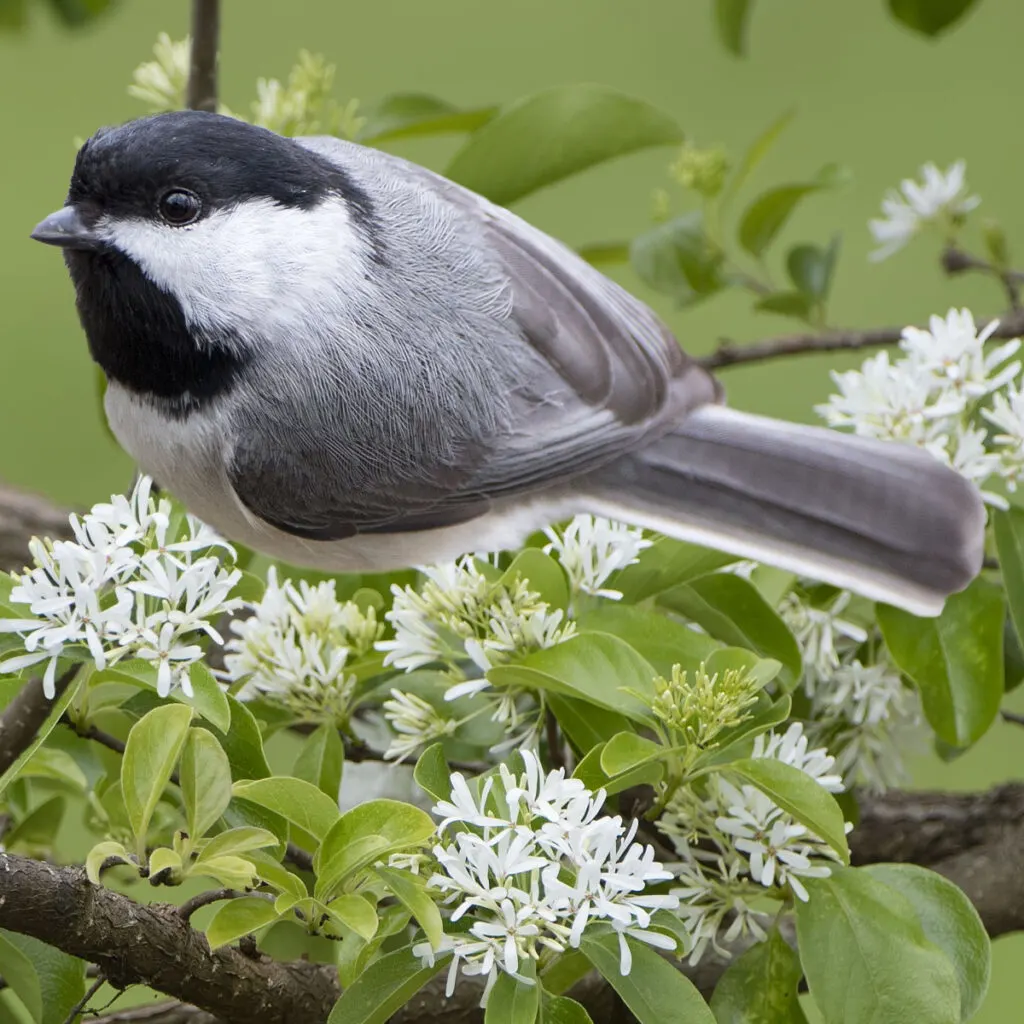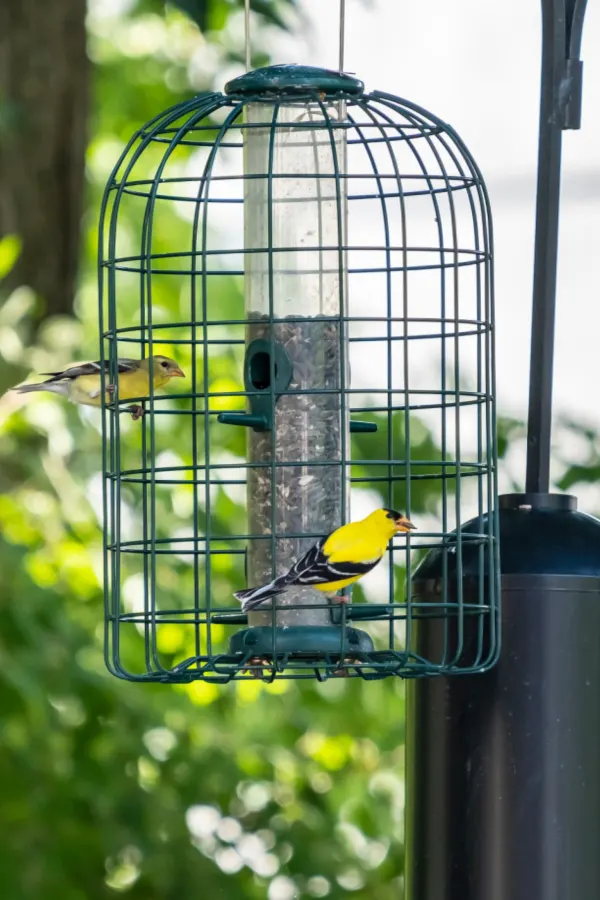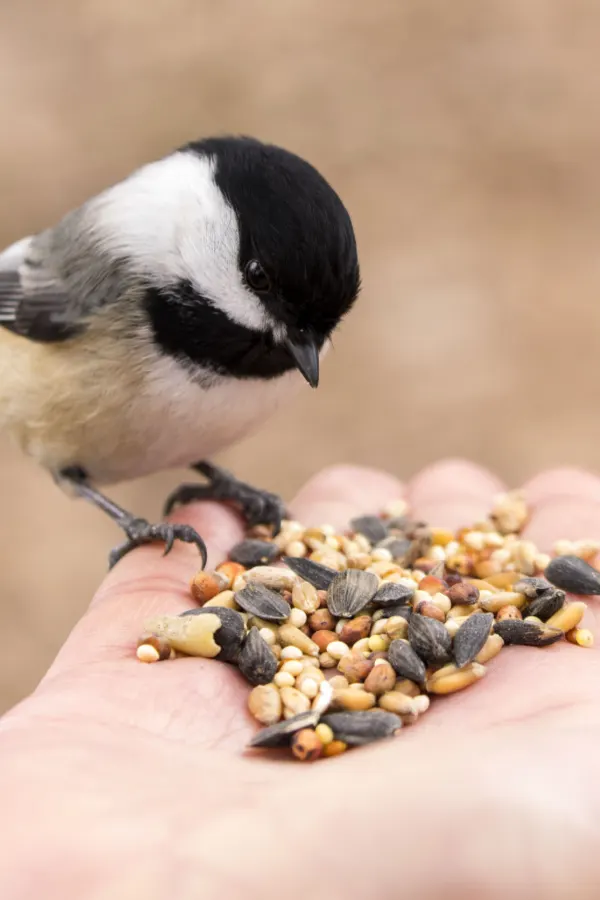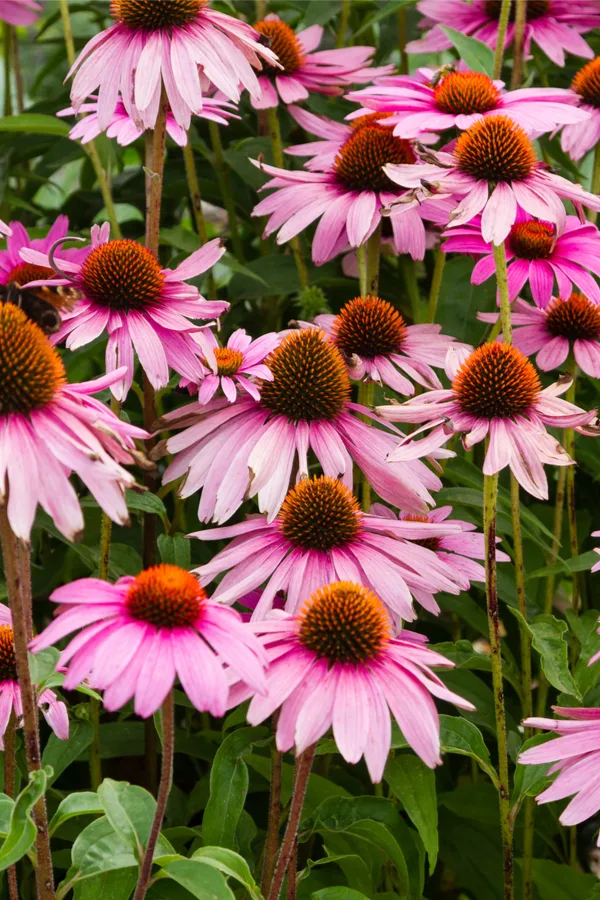Did you know that by simply feeding and attracting chickadees to your flowerbeds, garden and landscape, not only can you fill your yard with the beautiful sights and sounds of these little songbirds, you can also help your plants stay healthier and more productive than ever?
What’s not to like about the chickadee? For starters, its overly large head and small body frame make it one of the more unique and lovable birds in the landscape. It also happens to be one of the more talkative of backyard birds as well.
One thing is for sure – chickadees will let you know when they are around. Even though they are one of the smallest songbirds of all, they are more than happy to sing loudly. Especially the males when attempting to find a mate.

But all chickadees are more than happy to simple “talk” as well – letting out a wide range of sounds that together with their singing can bring a landscape to life!
Chickadees – The “Friendly” Bird
Adding to their allure, chickadees are also amazingly friendly. In fact, so much so that many gardeners and bird lovers train chickadees to feed directly from their hands. And they don’t just get along with humans, but with most other birds species as well, making life at bird feeders far better for all.
But perhaps the chickadees best attribute is just how helpful they can be to those who love to grow and garden. Which, of course, is exactly why getting them to visit and stay can pay off big for you and your plants. And when they stay, they stay all year around!
One of the best things about chickadees is that they don’t migrate. So once you get them to call your backyard home – they will stay for good – creating their nests and rearing their young nearby as well. That, in turn, only adds even more chickadee power for you flowerbeds and garden.
The Benefits Of Feeding & Attracting Chickadees
So why are chickadees so great for gardens and gardeners? For starters, ounce for ounce, they are one of the most prolific insect eaters around. Because of that, they can do wonders for keeping pest populations in check.
Chickadees are one of the lightest and smallest visitors to backyard flowerbeds, gardens and patios. In fact, nearly all species of chickadees weigh less than one-half of an ounce. And they measure at best just four to five inches in total length.
But even though they are small and light, don’t underestimate a chickadee’s appetite. They are actually big eaters and have no problem consuming large amounts of insects as a part of their daily diet.
Chickadees On The Hunt – How To Feed And Attract Chickadees
Chickadees love to hunt and eat aphids, beetles, moths and caterpillars. All of which can be serious pests to plants growing in flowerbeds and vegetable gardens. And they really do eat a lot of them. In fact, in the course of one day, a single chickadee can devour hundreds of them!
As if that wasn’t enough, they also feed caterpillars and other insects to their newly hatched chicks, And once again – in staggering amounts. It is thought that chickadees feed a single nest of baby birds in the neighborhood of 7500 caterpillars and insects in the three weeks before they grow old enough to leave the nest!
Listen To Our Podcast Below On How To Best Feed Birds In The Winter!
Last but not least, chickadees also feast on a wide range of seeds. More importantly, seeds that often become weeding issues for you in the landscape. Ragweed, Goldenrod, Joe Pye Weed and Thistle are all chickadee seed favorites. And the more they eat of them – the less chance they have to take hold in your landscape.
So now that we have covered all of the benefits of having chickadees visit and stay in your yard – let’s cover how to get them to come and stay. For chickadees to call your home their home, success all comes down to providing them the habitat and food they need and love!
How To Attract & Feed Chickadees
The Plants Chickadees Love
More than anything else, chickadees love plant life, foliage and lots of cover. As small birds, they can be prey to a wide list of larger birds and animals. Because of that, the more plants you can provide, the better. Larger bushes and tree canopies also give them more cover to nest and rear their young.
In addition to providing them protection, that same plant life brings in the insects they love to eat. Plain and simple, the more trees, bushes, perennials and living canopies of foliage you bring to your landscape, the more likely chickadees will call it home.
Black-eyed Susan, Coneflower and Bee Balm are all great perennials to plant for chickadees. They all produce plenty of seeds that they love to feast on. Oak, Maple and Birch trees are excellent trees, as are butterfly, hydrangea and Viburnum bushes. All provide cover and attract insects, providing chickadees plenty of food sources and areas to nest.
In addition to plant life, keeping a source of water on hand at all times is big for chickadees. Whether you have a bird bath, a small fountain, or even a little fishpond, chickadees need to hydrate often and love easy access to water.
Installing Bird Feeders – How To Attract & Feed Chickadees
Although chickadees love to hunt and consume insects and seeds, they also highly appreciate a free meal at a bird feeder. Especially over the long winter and early spring months when food can be scarce.
Although they will visit all type of feeders, there are a few styles chickadees seem to prefer. At the top of the list are metal cage bird feeders. These allow a space for smaller birds like chickadees to fly inside of a protective cage to feed without worry. They also happen to be squirrel proof! Affiliate Link: Steel Bird Cage Feeder – Squirrel Proof

As for the foods they eat most, chickadees will flock to feeders loaded with nyjer seed, safflower seeds, shelled sunflowers and shelled peanuts. As their favorite snack of all, chickadees really love mealworms! They provide the high energy they need when looking for a quick snack. Affiliate Link: Kaytee Wild Bird Food Mealworms For Chickadees, Bluebirds & Wrens
All of the above foods are most important in the winter when they are unable to find food as easily, but they will still snack on them through the spring, summer and fall months as well. The good news is if you feed them year round, they are even more likely to stick around to nest and call it home!
Attracting and keeping chickadees around really does come down to giving them the plants and cover they need – along with plentiful sources of food!
Here is to getting chickadees to visit and stay in your backyard. And even more, to enjoying all of the great benefits they bring with them! Happy Gardening – Jim and Mary.
Old World Garden Farms
Jim and Mary Competti have been writing gardening, DIY and recipe articles and books for over 15 years from their 46 acre Ohio farm. The two are frequent speakers on all things gardening and love to travel in their spare time.
As always, feel free to email us at thefarm@owgarden.com with comments, questions, or to simply say hello! You can sign up for our free email list in the subscribe now box in the middle of this article. Follow us on Facebook here : OWG Facebook. This article may contain affiliate links.


